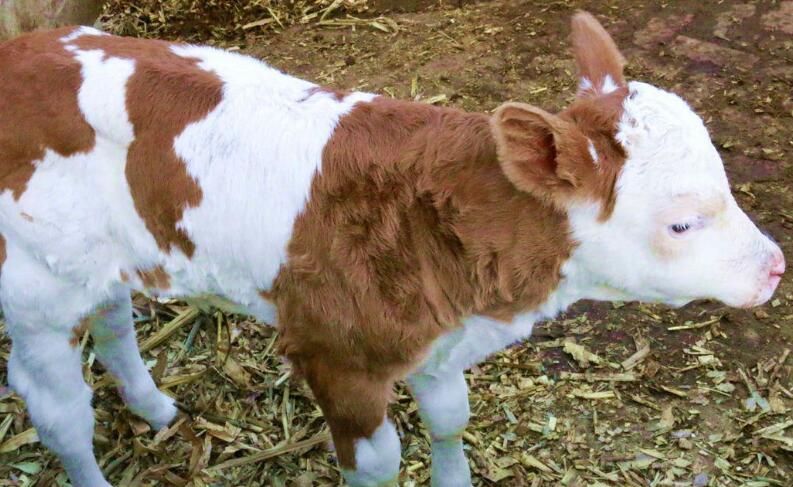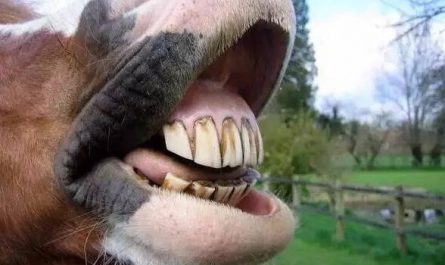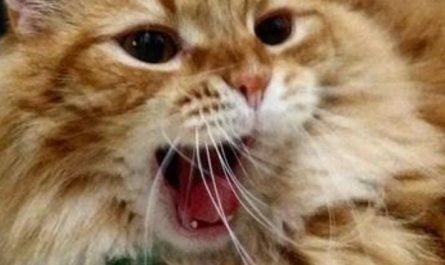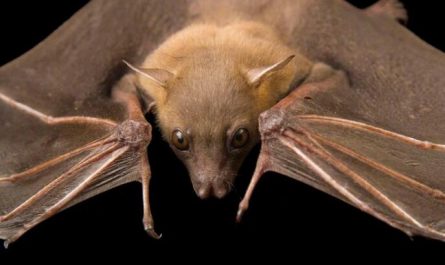Causes of calf diarrhea
The occurrence of calf diarrhea is related to the conditions of fetal development and the influence of the external environment. Due to different regions and seasons, calves suffer from diarrhea. In summary, it is mainly caused by the following reasons.
1. Bacteria cause enterotoxigenic Escherichia coli (ETEC), Campylobacter, Salmonella, Clostridium perfringens, etc., which can cause calf diarrhea. ETEC is the main bacterium that causes diarrhea in calves within one week of age. It invades calves and releases one or two enterotoxins to cause diarrhea in calves. Clostridium perfringens is the pathogen of enterotoxemia in calves.
2. Viruses that cause rotavirus, coronavirus, astrovirus, scutellavirus, microvirus, etc. can cause calf diarrhea, while rotavirus and coronavirus play an important pathogenic role.
3. Caused by improper feeding and management
(1) Improper management of cows
① During pregnancy, if the cow’s diet is unbalanced, incomplete, and lack of exercise, the cow’s nutritional metabolism process will be disordered, which will affect the normal development of the fetus in the mother’s body, resulting in poor growth and physical weakness in the newborn calf. Resistance is low, and in the first few days after birth, almost all of them are prone to diarrhea.
②The udders and nipples of cows are not clean, or feeding the calves with milk from cows suffering from mastitis may also be another way to cause calf diarrhea.
③ Malnourished cows have poor colostrum quality, less secretion, and low immunoglobulin content. Newborn calves fail to eat colostrum within a few hours after delivery, which can easily cause dyspeptic diarrhea.
④The incidence of diarrhea caused by newborn cattle is high. Because the first-born cow has less colostrum, the milk is poor, and the immunoglobulin concentration is low; the first-born cow has poor ability to take care of the calf, and the calf often cannot eat enough colostrum; the dystocia rate is high, which is bad for the calf. Cows have a great stress effect, and most of them require midwifery during delivery, and there are many opportunities for artificial pollution.
(2) Poor feeding, management and care of calves
①The calf barn is too humid or the body catches cold: the body temperature of the newborn calf is not sound, and the ability to adapt to humidity and cold is weak, and it is most prone to indigestion diarrhea.
② Poor sanitary conditions have an important impact. Feeding calves with unclean milk, dirty and unclean feeding troughs, and unclean cow houses (cattle stalls and cribs are not cleaned for a long time, not disinfected, bedding is not replaced for a long time, resulting in feces and urine accumulation and dirty, etc.) , Thereby increasing the chance of disease.
③ Artificial breastfeeding irregularly, irregularly, and the temperature of the milk can hinder the normal activities of digestive function and cause disease.
④ Different feeding methods. According to the survey, when feeding with a feeding bottle or bucket with a teat, 95 or 9.4% of calves died of diarrhea, and 6.9% when feeding with a feeding bucket.
⑤ Improper feeding of calves during lactation. During the transition from breast milk to feed feeding, if weaning is too rapid, or the quality or preparation of the supplementary feed is inappropriate, the calf’s gastrointestinal tract is easily stimulated and dyspeptic diarrhea occurs.
⑥ Poorly ventilated livestock houses, stuffy and crowded, lack of sunlight, dark and humid, etc. can promote the occurrence of diseases.
⑦The lactation time is too late, the calf licks the dirt due to hunger, causing the activity of the lactic acid bacteria in the intestine to be controlled by Sun Gen, lack of lactic acid, and the intestinal spoilage bacteria multiply, thereby destroying the normal digestion of milk.
(3) The larger the breeding scale, the higher the calf mortality caused by diarrhea. A research report from Cornell University in the United States confirms this. For example, in 44 herds with 50 heads, the average mortality rate from diarrhea within 3 months of age is 6.8%; in 15 herds with 150 heads, the average is 11.0%; at 200-350 heads, it is as high as 21.3%. .
(4) The prevalence and mortality rate of calves in group feeding is higher than that of feeding alone. The reason is that calves are often contaminated with feces and suffer from helminthiasis during group feeding. The incidence of calf diarrhea can be as high as 60%. It is only 9% when fed alone; when calves are mainly fed in groups, they often eat their coats due to sucking on their belly buttons or ears. The coats form hair balls in the rumen, causing indigestion and diarrhea.
4. Stress caused by the digestive organs of newborn calves is not fully developed and has poor adaptability to the external environment. Therefore, under the action of some adverse factors, such as cold, heat, noise, etc., it often leads to disorders of the calf’s digestive system. Nutritional disorders occur. For example, during artificial feeding, mental and environmental aspects will also cause stress to the calf and affect its absorption of colostrum immune globulin, thereby reducing the calf’s disease resistance and causing diarrhea. For another example, when calves are exposed to various stresses such as severe weather and large amounts of whole milk intake, their digestive functions are weakened, and rapid changes occur in the intestines. Enterotoxic Escherichia coli or Clostridium perfringens are easily invaded. It proliferates in a large amount in the body, causing diarrhea or enterotoxemia.
5. Cryptosporidium is a protozoan (coccidia) that can cause diarrhea in newborn calves. Cryptosporidium often parasitizes in calves’ jejunum and ileum and is adsorbed on the microvilli of intestinal cells. It only infects calves less than 4 days old. It is more common in calves aged 6-17 days. Infection through the digestive tract, the mortality rate can reach 30%.
Symptoms of calf diarrhea
Diarrhea caused by Escherichia coli, the most common symptom of acute enteritis, stool disease is usually first dry and thin, light yellow and porridge-like foul smelling stool, followed by gray or watery stool, sometimes with foam, followed by frequent and frequent bowel movements. It has a fishy smell, some of which are rancid. When draining feces, tail hair is often not stained, and it is easy to be overlooked if not carefully observed. In the middle of the disease course, there is anal incontinence, often abdominal pain, and body temperature rises above 40℃. In the later period, the body temperature drops below normal temperature and sleeps, and the mortality rate is about 10%; if bacillary blood dysentery occurs, the body temperature rises, the pulse rate is rapid, and the respiratory rate increases. Flushing or dark red conjunctiva, depression, reduced or abolished appetite, hyperintestinal sounds, and later weakened, and some have abdominal pain. Due to severe diarrhea, the sick calf was dehydrated and quickly lost weight, sunken eye sockets, dry skin, reduced elasticity, reduced urination, and blood concentration. If not rescued in time, death can occur within 1 to 3 days. The diarrhea caused by the virus often comes on suddenly and spreads quickly. Newborn calves are gray-brown and watery stools mixed with blood and mucus. The sick calves are extremely depressed and anorexia. After the diarrhea, they restore their appetite and often relapse due to overfeeding. Rotavirus infections in calves mainly occur within one month of age, and the incubation period is 15h to 4d. The main symptoms are depression, anorexia, and dehydration diarrhea.
The onset period can last from 1 to 8 days, the younger the age, the longer the onset time. Diarrhea caused by rotavirus can be cured within 24 hours without the synergistic effect of E. coli. If it is mixed with E. coli, the body temperature of the sick calves will increase, and the white blood cells will decrease. Finally, they may die of hemorrhagic enteritis caused by peptic ulcer, as well as local lymph node, collective lymph node, spleen and thymus endolymphatic tissue deficiency. The incubation period of coronavirus infection is 19-24 hours, and its clinical symptoms and intestinal lesions are more serious than those of rotavirus infection, and even if there is no coexistence of E. coli, the diarrhea caused by the coronavirus can also cause the death of calves over 1 week old. Diarrhea caused by Cryptosporidium, manifests as anorexia, progressive weight loss, long course, intermittent watery stool, occult blood in the stool, and mucus. Diarrhea caused by improper feeding and management usually occurs during lactation. At the beginning of the disease, the stools are mostly porridge-like, light yellow, grayish yellow or even grayish white. In the future, some drainage-like dark yellow, sometimes yellow, sometimes dark green porridge-like feces, the smell is not great, if the disease is serious, there will be a fishy smell. Feces are often attached to the anus, tail hair, hocks and thighs. The temperature of sick calves is generally normal, or slightly higher or lower. Pulse and breathing speed up a little, lack of energy, loss of appetite, or loss of appetite, and more like lying down. In addition, the stool has a sour smell, and is mixed with small bubbles and undigested curds or feed fragments. The bowel sounds are high and loud, with mild suffocation and abdominal pain.
Heart sounds increase, heart rate increases, and breathing speeds up. When the diarrhea persists, the skin becomes dry and wrinkled due to the lack of water in the tissues and cells, the skin becomes rough and loses its luster, and the eyes are sunken. In severe cases, he could not stand steady and tremble all over. In the later stages of the illness, the body temperature often drops suddenly, and the limbs, ear tips, and nose become cold, and eventually coma and die.






